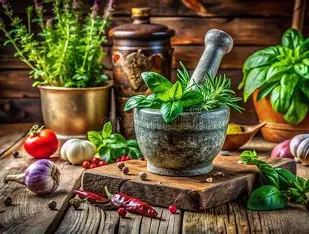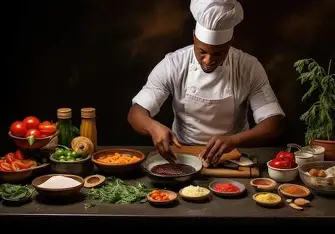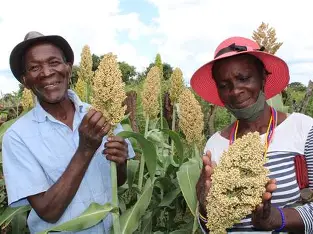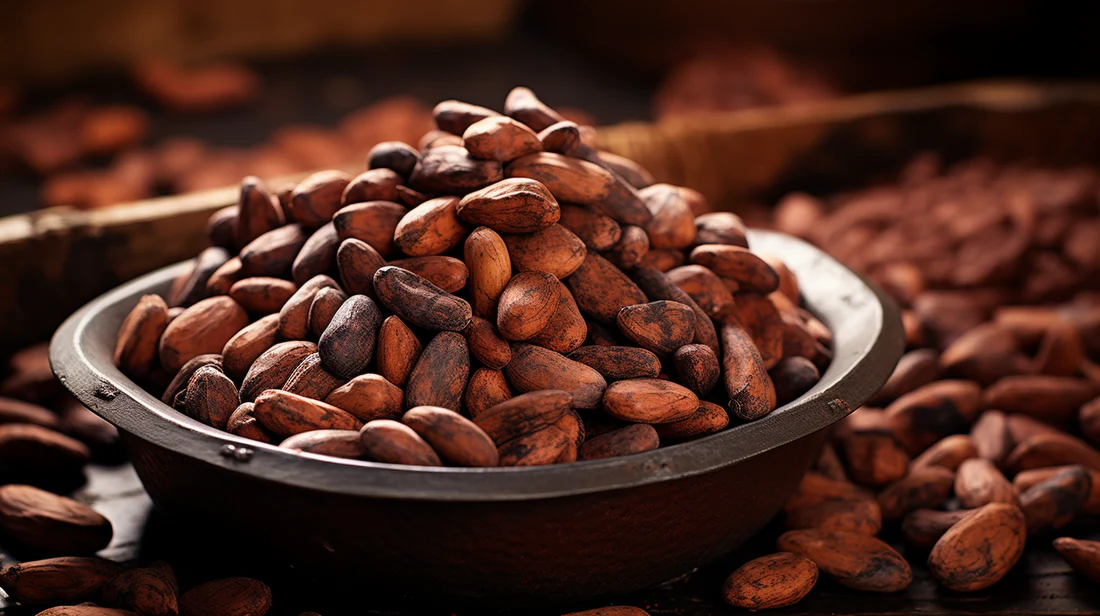Food as Medicine: The Return of Africa’s Healing Kitchens

In a small kitchen in Accra, a quiet revolution is simmering. Between bubbling pots of palm nut soup and bowls of spicy millet porridge, something remarkable is happening, Africa’s healing kitchens are returning. Across cities and villages, young Africans are turning to ancestral foods not just for taste, but for therapy. From Nigeria’s bitter leaf soup to Ethiopia’s teff bread, what was once dismissed as “old-fashioned” is now being celebrated as medicine.
For decades, the continent’s relationship with food was shaped by colonization, urbanization, and fast-food globalization. Western diets flooded African cities, introducing processed meals that promised convenience but often delivered health crises; obesity, diabetes, and hypertension. Now, a quiet shift is underway. Africans are returning to the wisdom of their grandmothers and science is finally catching up. According to a World Health Organization report, traditional diets rich in whole grains, fruits, and local vegetables are among the healthiest on the planet.

What’s driving this renaissance is awareness. Urban youth are seeking answers to modern problems; chronic stress, fatigue, and lifestyle diseases in age-old remedies. In Lagos, health collectives now teach people how to cook with indigenous ingredients like ugwu, moringa, and tiger nuts. In Nairobi, organic markets are booming, while in Dakar, nutritionists are reviving ancient recipes once used to treat everything from malaria to postpartum fatigue.
Africa’s healing kitchens aren’t a new idea, they are a revival of what was almost forgotten. Before pharmaceuticals and imported superfoods, food was Africa’s first pharmacy. Bitter herbs were used to clean the blood; fermented grains strengthened the gut; palm oil provided antioxidants long before “omega-3s” became trendy. In Yoruba tradition, the phrase “ounje ni oogun” food is medicine, was both philosophy and practice.
Science now backs what our ancestors knew intuitively. Studies published in the African Journal of Traditional, Complementary and Alternative Medicines show that local vegetables like bitter leaf, moringa, and scent leaf have significant antibacterial, antioxidant, and anti-inflammatory properties. Yet for years, African diets were stigmatized and considered “poor man’s food.” That narrative is changing fast.
What’s fascinating is how innovation is blending with tradition. Across Africa, chefs, nutritionists, and startups are reinventing local dishes for modern tastes. In Abuja, the startup FoodMedic Africa offers meal kits inspired by traditional healing foods; moringa smoothies, fonio porridge, and pepper soup detox packs. In South Africa, restaurants now pair indigenous grains like sorghum and amaranth with fine dining techniques. The once-humble millet porridge has found its way onto gourmet menus.
For a long time, the global wellness industry exported its version of health; quinoa from Peru, chia from Mexico, matcha from Japan. Africans bought into it, often at a high price. But now, the continent is realizing that its own “superfoods” baobab, hibiscus, moringa, fonio, and African black beans were always here. The rise of wellness influencers and chefs highlighting these ingredients has ignited a movement of food pride.
What makes Africa’s healing kitchens powerful isn’t just nutrition; it’s identity. In an era of imported culture and fast living, cooking traditional meals has become an act of resistance. It connects young Africans to roots that globalization tried to erase. Food is now a language of heritage and healing. From Instagram pages documenting local recipes to YouTube channels teaching herbal soups, culinary storytelling is preserving what textbooks never did.
Take Nigeria’s moringa revolution as an example. Once a rural tree used mostly as animal feed, moringa is now hailed as a miracle plant. Its leaves, rich in iron, calcium, and vitamin C, are used to treat anemia and fatigue. Today, moringa powder lines supermarket shelves in Lagos and Abuja, competing with imported supplements. The tree that once grew behind homes unnoticed is now a symbol of Africa’s sustainable nutrition future.
Meanwhile, fermented foods once associated with rural diets are being rediscovered for their gut health benefits. In Ghana, kenkey (fermented maize dough) is celebrated for its probiotic qualities. In Ethiopia, injera, made from teff, supports digestive balance and immunity. Even the popular Nigerian ogi (fermented pap) is being researched for its potential to combat malnutrition in children. The science is simple but profound: fermentation makes nutrients more bioavailable, reduces toxins, and introduces beneficial bacteria.

Governments and NGOs are beginning to take note. In Kenya, initiatives like Scaling Up Nutrition are promoting traditional diets to improve public health and food security. In Senegal, agricultural researchers are developing improved varieties of indigenous grains like fonio and millet to withstand climate change while retaining their nutrient density. These efforts highlight a broader truth, the future of African food security lies in its past.
Yet, the challenge remains accessibility. Many traditional foods are disappearing due to urban lifestyles, imported convenience foods, and loss of farming knowledge. In cities like Kampala and Lagos, traditional ingredients are becoming luxury items. That’s why community-based projects from seed-saving networks to cooking classes are crucial. The revival must be intentional, not nostalgic.
Beyond health, this movement also has economic implications. Africa’s healing kitchens can drive agribusiness, tourism, and export industries. Brands that champion indigenous foods are finding global markets hungry for authenticity. Baobab fruit powder from Senegal now sells in health stores in London and New York. Ethiopian teff exports are rising. What began as a cultural revival is quietly turning into an economic renaissance.
Still, the essence of Africa’s healing kitchens is not commerce, but connection between people, plants, and purpose. A grandmother teaching her granddaughter to grind bitter leaf. A chef reimagining millet pancakes for modern brunch menus. A farmer proudly growing herbs that once only thrived in his ancestors’ gardens. Each act, no matter how small, is a thread in the fabric of cultural restoration.
The return of these kitchens isn’t about rejecting the modern world, but redefining it. It’s about balance, knowing that wellness doesn’t come from imported pills or powders, but from the soil beneath our feet. Africa’s food future lies not in imitation, but in innovation rooted in heritage.
As the saying goes, “He who forgets his soup forgets his story.” Africa’s new generation isn’t just remembering the recipes; they’re rewriting them for the future. And in every simmering pot, there’s proof that healing doesn’t always come from a bottle sometimes, it comes from a bowl.
You may also like...
Super Eagles' Shocking Defeat: Egypt Sinks Nigeria 2-1 in AFCON 2025 Warm-Up

Nigeria's Super Eagles suffered a 2-1 defeat to Egypt in their only preparatory friendly for the 2025 Africa Cup of Nati...
Knicks Reign Supreme! New York Defeats Spurs to Claim Coveted 2025 NBA Cup

The New York Knicks secured the 2025 Emirates NBA Cup title with a 124-113 comeback victory over the San Antonio Spurs i...
Warner Bros. Discovery's Acquisition Saga: Paramount Deal Hits Rocky Shores Amid Rival Bids!

Hollywood's intense studio battle for Warner Bros. Discovery concluded as the WBD board formally rejected Paramount Skyd...
Music World Mourns: Beloved DJ Warras Brutally Murdered in Johannesburg

DJ Warras, also known as Warrick Stock, was fatally shot in Johannesburg's CBD, adding to a concerning string of murders...
Palm Royale Showrunner Dishes on 'Much Darker' Season 2 Death

"Palm Royale" Season 2, Episode 6, introduces a shocking twin twist, with Kristen Wiig playing both Maxine and her long-...
World Cup Fiasco: DR Congo Faces Eligibility Probe, Sparks 'Back Door' Accusations from Nigeria

The NFF has petitioned FIFA over DR Congo's alleged use of ineligible players in the 2026 World Cup playoffs, potentiall...
Trump's Travel Ban Fallout: African Nations Hit Hard by US Restrictions

The Trump administration has significantly expanded its travel restrictions, imposing new partial bans on countries like...
Shocking Oversight: Super-Fit Runner Dies After Heart Attack Symptoms Dismissed as Heartburn

The family of Kristian Hudson, a 'super-fit' 42-year-old marathon runner, is seeking accountability from NHS staff after...





